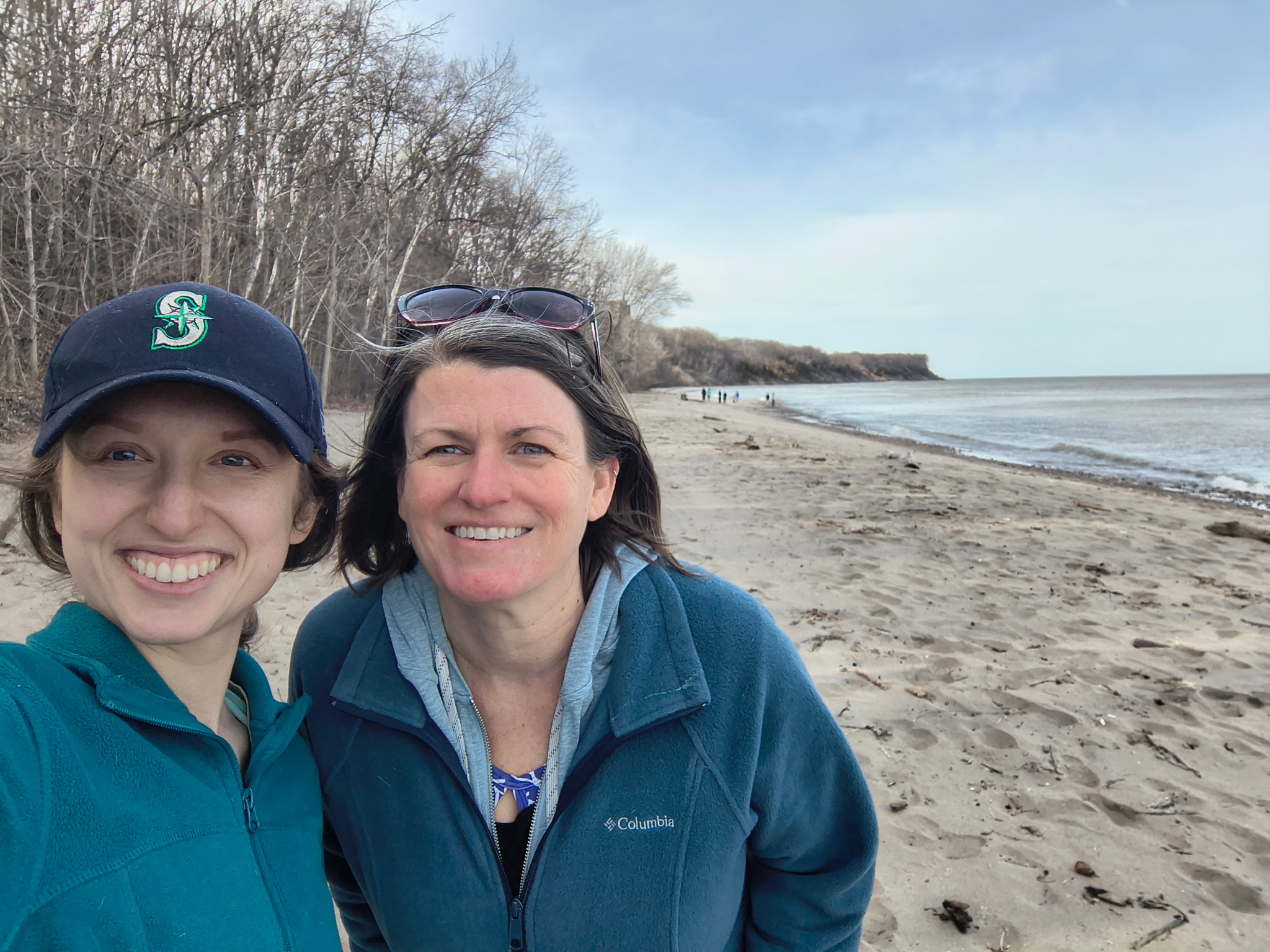University of Wisconsin-Green Bay research supported in part by Wisconsin Sea Grant has now made it to publication, shedding valuable light on how the bay of Green Bay has changed over time.
“Benthos of Green Bay, Lake Michigan revisited after 40 years: A temporal update and assessment of environmental associations” was published in the Journal of Great Lakes Research and is available online. Until this effort, the benthos of lower Green Bay had not been comprehensively studied since 1978. (The benthos encompasses the organisms found on the bottom, or in the bottom sediments, of a body of water.)

From left to right, Cadie Olson, Chris Houghton and Brandon Falish are shown conducting research on Green Bay. Findings from this work were recently published in the Journal of Great Lakes Research. (Photo: Cadie Olson)
Cadie R. Olson, who worked with UW-Green Bay scientist Chris Houghton on this effort while she was a graduate student, is the paper’s first author. In addition to Olson and Houghton, other contributors include biology professor Patrick Forsythe.
“We are delighted that this collaborative effort among Wisconsin Sea Grant, the Wisconsin Department of Natural Resources, the EPA and UW-Green Bay is being shared through the Journal of Great Lakes Research,” said Olson. “This project has implications for water quality, ecosystem function and management of the Area of Concern. Green Bay continues to prove that is it is a complex and dynamic ecosystem, and benthos are no exception. We hope that this data will be used to help determine water quality criteria, prioritize areas of restoration, and develop our knowledge of benthic responses to introductions of non-native species.”
Houghton expects the work to be widely cited into the future. Yet, he noted, “Our recently published research is really just the tip of the iceberg in understanding the Green Bay benthos and ecosystem. Now that we know how things have changed over the last 40 years, and what organisms are now present, we can do the work understanding how benthic communities support upper trophic levels, from bait fish to yellow perch and walleye, to muskellunge and pelicans. In the future, we will seek to finish our survey in the area north of Oconto and Sturgeon Bay, and continue the collaborations that were developed during this project.”
The Sea Grant-funded project from which the team’s paper sprang was titled “Spatial and temporal distribution of the benthic macro-invertebrate community of Lower Green Bay, 1938-present.” You can find our 2019 coverage of that work here. The team’s research built upon a trove of historical documents that had been assembled by UW-Green Bay professor emeritus Hallett J. “Bud” Harris and are now kept in the campus library.
Olson now works for the Missouri Department of Natural Resources, having completed her master’s in May 2021. “It has been an adjustment going from large lakes to streams, but I’m thrilled that I’m continuing to apply my knowledge of macroinvertebrates and learn more about them in a different ecosystem,” said Olson of the transition.
Learn more about the Green Bay research in a Wisconsin Sea Grant presentation given by Olson and Brandon Falish on Oct. 22, 2020, as part of the “Lake Talks” series.





